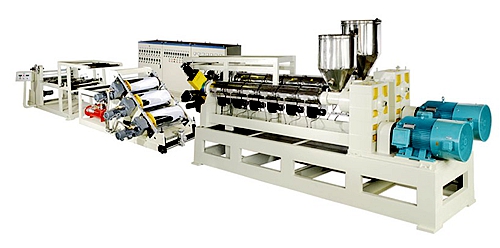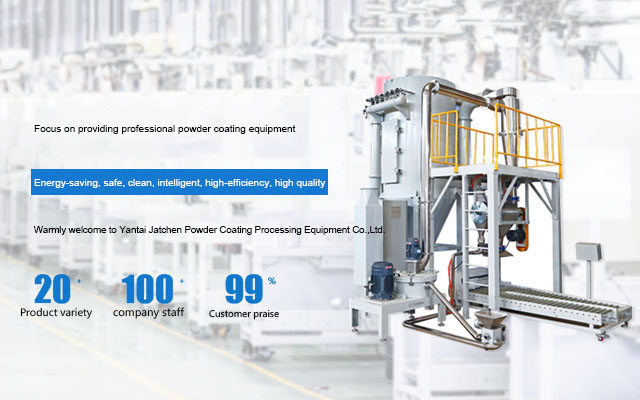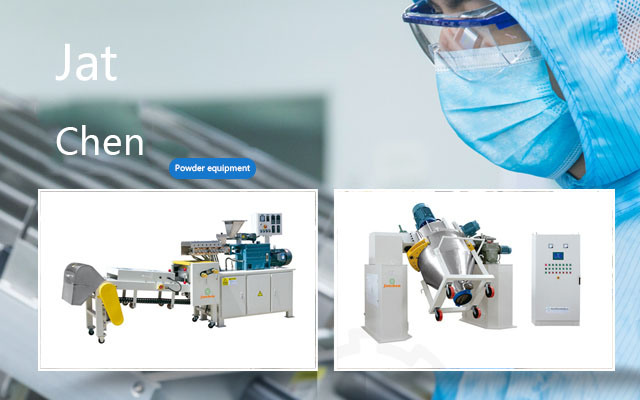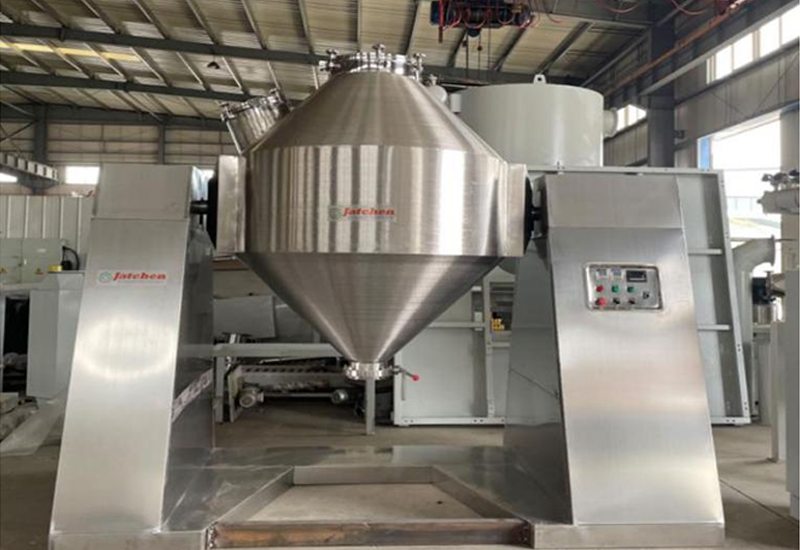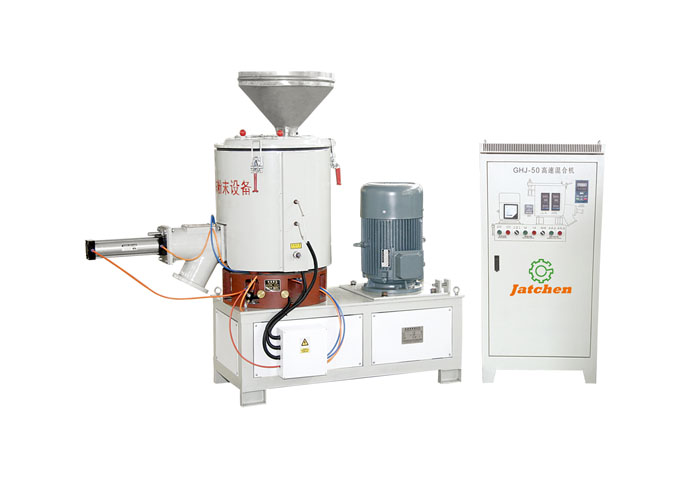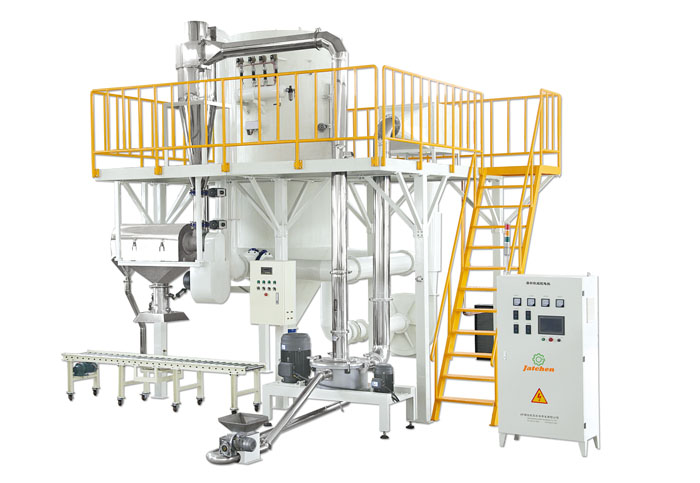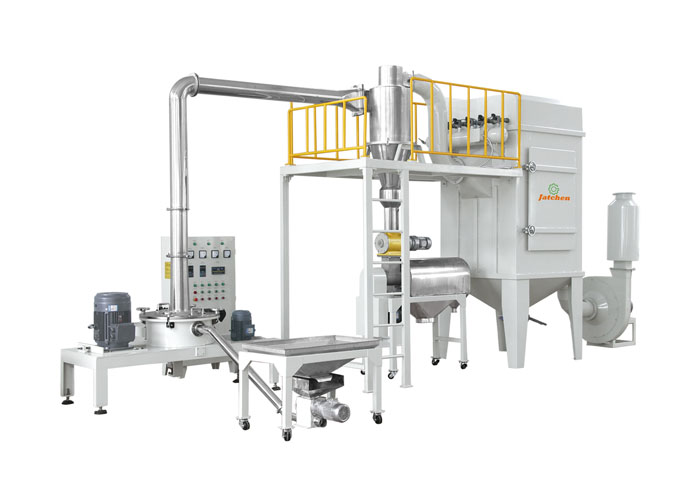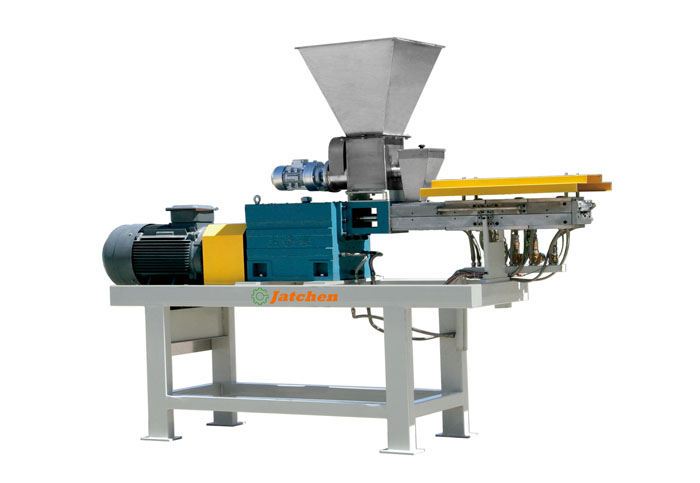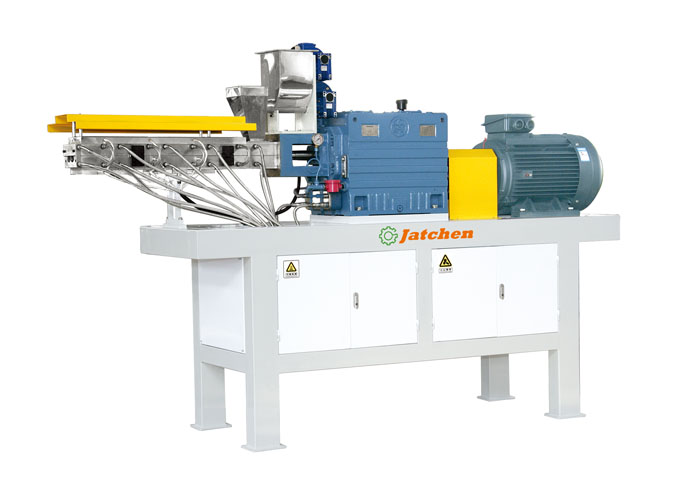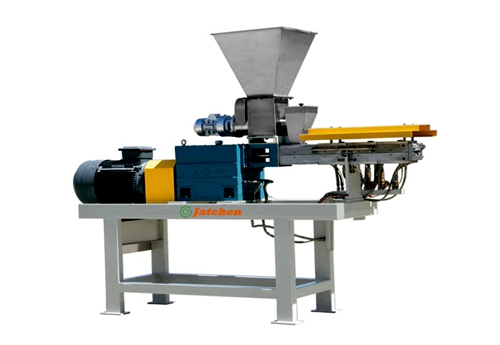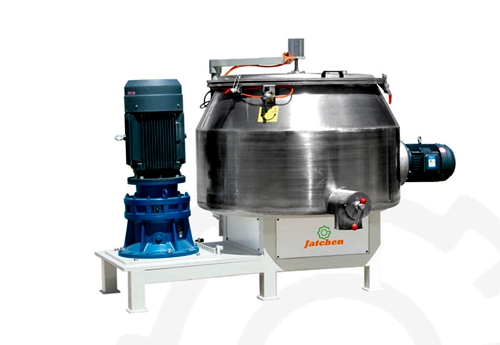Ultra-fine powder coatings have opened up a new field for the application of powder coatings. This paper summarizes the characteristics, properties and research progress of ultra-fine powder coatings.
1. Preface
Powder coating and painting is a rapidly developing powder coating with the outstanding advantages of environmental protection, economy, high efficiency and energy saving. The powder coating is 100% solid, unlike liquid paint, which contains a large amount of solvent emissions, and is an environmentally friendly coating product without public hazards. The unused powder of powder coating can be recycled for reuse. The spraying process is simple and stable, and the energy consumption is low. Compared with liquid coating, it has the characteristics of low cost and good performance. The development speed of powder coatings is very fast, and it is much faster in China than in other countries. The main reason is that China's economic development is very fast, and a large number of newly-built coating lines prefer to use powder coatings. China has become a big country in the use and production of powder coatings, but there is still a certain gap between China and developed countries in the production of high-grade raw materials and the research and development of high-grade products. How to aim at the cutting-edge topics with great practical significance, use domestic and foreign high-tech to tackle key problems and realize industrialization is an important decision faced by Chinese scientists and professionals.
Powder coatings have shown very strong competitiveness in the development of the last ten years, but there are also shortcomings and limitations that need to be overcome in the development process. The four recognized shortcomings of powder coating are that the coating is too thick, the apparent effect of the coating is poor, and it is difficult to change color without curing at low temperature. In view of these limitations and shortcomings, scientists and engineers in various countries have done a lot of research and achieved remarkable results in many fields. For example, in the research and development of low-temperature curing powder coatings, there are commercial products that can be baked and cured at 1201C, which are used for coating wood and composite boards; The research on UV curing of powder coatings has also made a breakthrough and has been applied industrially. Shanghai Xinxing Electrostatic Spraying Equipment Co., Ltd., the old factory of powder coating equipment in China, has successfully developed ultraviolet curing equipment for powder coating in cooperation with Belgian UCB company, which has made China gain beneficial development in this emerging field, and
Bring great potential. At present, in order to make industrial users accept powder coatings, it can be considered that the role of high quality and economy makes the greatest contribution to complying with environmental protection regulations. Compared with other types of coatings, the market share of powder coatings is not large. However, in the relatively mature field of industrial coatings, powder coatings are one of the few products that can maintain a high growth rate for many years.
2. Brief introduction of superfine powder coating technology
Powder coating has developed rapidly with its outstanding advantages of environmental protection, economic efficiency and energy saving. However, powder coating also has shortcomings that need to be overcome urgently, and the two recognized shortcomings that limit powder coating are: too thick coating and poor coating surface flatness. The reason is that the particle size of powder coating is larger, far exceeding the thickness of ordinary paint film. It not only wastes materials, but also in many cases, too thick coating will cause the performance of paint film to decline. For example, the coating is easy to fall off and the hardness of paint film is reduced. In order to overcome the above defects, scientists in various countries have done a lot of research and developed ultrafine powder coatings. The particle size of this powder becomes smaller, and the coating surface effect is very good, which can realize thin coating.
Scientists of Canada Huixu Micro-powder Technology Co., Ltd. successfully overcome the molecular attraction between ultra-fine powder particles with special technology. The agglomeration phenomenon is avoided, and a powder coating with a particle size of 10~20pm and good fluidization performance is obtained. This kind of coating can not only form a very flat coating surface, but also be applied with a thin coating. The surface effect of ultra-fine powder coating is greatly improved. Salt spray experiment proves that the ultra-fine powder coating with very thin thickness has excellent corrosion resistance, mainly because the thickness of ultra-fine powder coating is higher than that of coarse powder coating at the thinnest part of the coating.
3. Fine powder of powder coatings and its development
Among the four main shortcomings of powder coatings, the most important ones are too thick coating and poor apparent effect of coating. The coating thickness of powder coating is usually 60~100pm, far exceeding that of ordinary paint film, which not only brings unnecessary waste, but also causes the performance of coating film to drop if the coating is too thick in some cases.
The poor apparent performance of the coating reduces the decoration of the powder coating, thus limiting the application and development of the powder coating, especially for some high-grade products (such as cars, etc.), it is impossible to apply the powder coating. The coating of powder coating is too thick and the apparent effect is not good, which is mainly caused by the larger particle size of powder coating. The particle size of ordinary powder coatings is usually 30~40mm, which is difficult to achieve smooth surface and good surface effect after electrostatic spraying. If the particle size of powder coating can be reduced, a coating with good surface effect can be obtained, and thin coating can be applied. Fineness of powder coating can not only save a great deal of cost of thin coating, but also get a very good coating surface, which can be said to be one of the most important topics in the research and development of powder coating. Scientists from all over the world and major powder coating companies around the world have given great investment to this topic, and at the same time, it has attracted the attention of other industries and some governments. For example, in 1997, the three major American automobile companies jointly invested to set up a research institute in Detroit, which specialized in the research of powder coating's fine powder, and tried to use superfine powder coating instead of paint for automobile body; In 1998, the Canadian government also allocated special funds for the research of powder coating micronization. Due to the market demand and people's attention, many breakthroughs have been made in the research of powder coating micronization. The most common way is to add some lubricants to the powder coating, which makes it difficult for the powder coating to agglomerate, thus achieving the purpose of appropriately reducing the particle size of the powder; Some large companies also adopt products with narrow particle size distribution, and select products with high leveling property and lubricant for adjustment, so that the particle size of powder coating can be further reduced and thin coating can be initially achieved. Ferro Company of the United States has developed a new process of preparing powder coatings with supercritical carbon dioxide, which can obtain powder coatings with even particle size distribution. In China, many companies produce products with high leveling property and claim to have achieved thin coating. In fact, the particle size of powder has not decreased, but it is really very popular in the market because it can get thin coating.
The above-mentioned methods are only some ways to realize the powder coating micronization. They did bring a lot of benefits to the powder coating industry, but they did not really realize the powder coating micronization. Fine powder coating means that the particle size of powder coating is less than 20 mm. Generally, when the coating thickness is 2.5 times of the particle size of powder, the surface effect is better, while ultrafine powder has its own characteristics, that is, the gas fluidization performance is poor. This is due to the fact that with the decrease of the grain size of arrowroot, the quality of powder will be reduced exponentially, and the surface area of powder will be increased exponentially. As a result, the molecular force is greatly enhanced, which makes the ultrafine powder agglomerate and unable to carry out normal fluidization. Normal fluidization is the premise of electrostatic spraying of powder coatings. Therefore, constant fluidization becomes the main technical reason why the micronization of powder coatings is difficult to achieve. Agglomeration of fine powder is the natural characteristic of ultrafine powder. In order to achieve fine powder, it is necessary to overcome the molecular force between ultrafine powders.
3.1 Progress of superfine powder preparation technology
3.1.1 Mechanical method and chemical method
The preparation of ultrafine powder mainly includes mechanical crushing and chemical synthesis. Mechanical pulverization is the superfine grinding of conventional block or powder materials by mechanical force. The chemical synthesis method is to generate the basic particles of matter-molecules, atoms and ions, etc. through the chemical reaction of matter, and grow into ultrafine powder through nucleation growth and coagulation. This method has three advantages:
First, versatility. It can prepare ultrafine powders with various compositions, morphologies and particle sizes.
Second, the product quality can be controlled on the molecular or atomic scale.
Third, the process can realize precise control and adjustment, and it is easy to realize industrial production. From the perspective of preparation and application of ultrafine powder, the chemical synthesis method of ultrafine powder represents the development direction of ultrafine powder preparation technology, and has become the research and development focus of various countries.
3.2 Engineering problems of superfine powder preparation
The production process of ultrafine powder materials has its own special industrial reaction process. Compared with the main difference, the proportion of raw material cost of materials is relatively reduced. The function of materials determines that the high added value of products largely depends on the shape of products (shape and attitude distribution, crystal composition and shape, etc.). Therefore, in the development and research of the final production process, the main control indexes of production should be adjusted through the process parameters. The shape of powder material is the key to industrial production. The solution of engineering problems in material preparation is the premise of engineering control and process amplification. Mastering the law of ultra-fine powder process is the basis for solving engineering problems.
4. Requirements of superfine powder coatings
Ultra-fine powder coatings can realize flat and thin coatings, that is to say, powder coatings characterized by ultra-fine powder thin coatings may have some special technical requirements for coatings and painting. Usually, powder coatings require that the melt viscosity of resin is low, but the glass transition temperature of resin cannot be low. The pigment has better dispersibility and strong hiding power; The particle size of powder should be small and the distribution should be narrow.
This requires the crushing and grading effect of crushing equipment to be better; Powder coatings also need to have good fluidity and electrostatic performance of dry powder. To comprehensively solve these problems, we need the joint efforts of raw material manufacturers, powder mills, equipment manufacturers and users.
In this paper, the ultra-fine powder coating with good fluidity is studied. The focus of the research is that users can paint normally without changing any equipment. Below, we will list a series of technical problems encountered in the actual development and application process.
4.1 speed cover force
It is difficult for ordinary powder to be coated with thin coating, the film thickness is generally 60~90mm, and there is usually no hiding power problem. In application, it was soon found that the coating of superfine powder obtained by ordinary formula did not have enough hiding power when the coating was less than 50mm, especially for white products, which could not meet the requirements in actual coating. Therefore, we appropriately increased the content of pigment to make it have a high hiding power like liquid paint, among which, the white product is quite special, so we must choose rutile titanium dioxide with the strongest hiding power and increase the dosage at the same time, otherwise it will not meet the requirements. With the decrease of the film thickness, the sensitivity of the coating to hiding power increases exponentially. During the development, we found that a series of measures must be taken to prevent the uneven melting of products with the increase of pigment content. Firstly, resin with better melting property is used; Secondly, titanium dioxide with good melting property or titanium dioxide treated by wrapping is used. In addition, it is necessary to enhance the kneading effect during extrusion. Therefore, in order to achieve very good hiding power, the powder formula should be improved accordingly.
4.2 Leveling
The leveling and sagging of ordinary powder coatings are a pair of contradictions. When the leveling is good, it is easy to sag. Ultra-fine powder coatings are not prone to sag due to Bo Tu, so the amount of leveling agent can be increased to achieve better leveling performance. The ultrafine powder has a very smooth coating surface because of its fine particle size and uniform spraying.
4.3 Chargeability of powder
Ultra-fine powder is small in quality and difficult to powder. Theoretically, some electrifying agents should be added to improve the powder rate. However, in practical application, it is found that the lower one-time powdering rate is actually an advantage. Because of the low powder coating rate, the selectivity of spraying is enhanced, that is, it is easy to get uniform coating thickness when spraying. Because superfine powder solves the fundamental problem of powder fluidization, there is no problem in recycling superfine powder.
4.4 Cost
As the film thickness is greatly reduced, the cost of superfine powder coating will be greatly reduced. But the percentage of cost reduction is not directly related to the percentage of powder saving. Because the selection of many high-grade raw materials increases the production cost, superfine powder is usually much more expensive than ordinary powder. However, the white superfine powder products use high-grade titanium dioxide because of its large size, and its cost is higher than other color products. The cost of dark superfine powder increases little. Generally speaking, superfine powder coating still has obvious advantages in comprehensive cost, and the more high-grade products, the more obvious the cost is reduced. The market experience in the past six months is that, due to insufficient awareness of new products, customers who take the lead in using superfine powder are not interested in the cost reduction factors of painting, but the driving force is to improve the product grade in order to get a smooth apparent effect. Of course, even if the cost saved now is obviously higher than the cost increase.
5. Coating of superfine powder
5.1 Spraying equipment and process
The starting point of overcoming the problem of superfine powder coating is to thoroughly solve the fluidization problem of superfine powder, so that theoretically, no coating process will be changed. In the process of practical application, ultra-fine powder can be completely fluidized like ordinary coarse powder, and there is no problem of poor fluidization such as gun blockage. However, the spraying of superfine powder still has its particularity. Ultra-fine powder has smaller mass and larger surface area. Although the charge of a single particle is less, the total charge increases a lot. After more than one year's test and application, we found that the spraying equipment basically didn't need to be changed, whether it was the manual spray gun in the simple spray room or the most advanced automatic spray gun in the modern spray room, it could spray freely. However, the spraying process needs to be slightly changed according to the specific situation, for example, the distance can be a little closer, and the voltage can be a little lower. The spraying process parameters of ultrafine powder are the same as those of ordinary coarse powder, and each production line has its own best coating conditions to meet its own requirements, which requires technicians to conduct some groping tests on the spot.
5.2 Powder rate and selectivity
There are many fine powders in the recycled powder of ordinary coarse powder, and the problems of poor fluidization, such as agglomeration and powder spitting, often occur in repeated use, which brings trouble to the recycling of powder coatings. Therefore, it is necessary to mix recycled powder with coarse powder in a certain proportion and recycle it. Ultra-fine powder is not as easy to get to the surface of workpiece as coarse powder because of its small mass, and the one-time powder feeding rate is worse than coarse powder, but this is not a bad thing. The poor powder feeding rate makes it easy to get a uniform and thin coating by spraying ultra-fine powder with better selectivity, which is difficult for coarse powder to achieve. On the other hand, because the superfine powder solves the fluidization problem of fine powder, there is no problem of poor fluidity in the recovered powder. As long as the equipment has a recovery device, there is no problem in coating.
5.3 Recycling performance and recoating performance
At present, there are two commonly used recycling systems: cyclone recycling and filter bag recycling. Both methods can effectively recover all unused powders. Both coarse powder and superfine powder contain particles of various sizes, but the proportion of children is different. Although the average particle size of ultrafine powder is much smaller than that of coarse powder, its particle size is within the designed recovery range of existing recovery equipment. It should be said that there is no problem in normal recovery, and the recovered powder usually has a smaller particle size than the powder used for the first time. The technical key of superfine powder coating is to thoroughly solve the fluidization problem of superfine powder, so the recovered powder of superfine powder has the characteristics and application of superfine powder coating.
5.4 coating performance
The coating of superfine powder is actually a successful spraying process by solving the fluidization of fine powder. The coating of superfine powder has different coating properties from ordinary powder for the following reasons. First, the particles are fine, the coating is dense and the surface is smooth, so the scratch resistance and smoothness of the surface are enhanced; Secondly, the coating is thin, which avoids the disadvantages such as coating falling off caused by thick coating. In addition, it is difficult to get thin coating by coarse powder coating, and too thick coating actually brings great waste. In order to save costs, conventional powder coating must add a large amount of cheap fillers, and these moisture fillers. Although it does not affect the covering power of the coating, it affects the chemical properties and corrosion resistance of the coating to a certain extent. Ultra-fine powder has to use the best raw materials because of its thin coating and high covering power, and it can afford the best raw materials because of its thin coating. Therefore, the performance of superfine powder coating is obviously superior to that of ordinary powder coating in many aspects, such as corrosion resistance, weather resistance, softness, adhesion hardness and so on. Of course, if strong mechanical friction resistance is required, then thin coating is not as good as thick coating.
6. Application examples of superfine powder coatings
6.1 Black parts
Most of the interior parts of automobiles can be coated with powder coatings, the main function of which is protection. However, because ordinary powder can not achieve thin coating, the coating thickness is usually 60~100pn, so it is not widely used. However, black ultrafine powder has no problem of hiding power and surface flatness. In practical application, the film thickness has dropped to an average of 20pm, which saves a lot of costs. The corrosion resistance of the coating is equivalent to that of ordinary powder, and the hardness and cohesiveness have been increased.
6.2 Furniture, containers and other indoor products
Some customers choose superfine powder for producing export products with high surface requirements. In order to achieve the best apparent quality, the film thickness is reduced little, and as a result, the cost is not reduced. This shows that in the low-priced indoor product market, the application of superfine powder has no cost advantage for the time being.
6.3 Outdoor weathering products
The spraying of aluminum profiles, etc. firstly requires excellent weather resistance, and secondly, better apparent performance. Ultra-fine powder is made of high-grade weather-resistant polyester and inorganic weather-resistant pigment, which can obtain coating products with excellent performance in both aspects, and more importantly, it can save cost significantly.
6.4 Automotive field
For many years, automotive finishing varnish has been considered as an inaccessible area for powder coatings. However, due to the advantages of powder coatings in economy and environmental protection, recently, since the successful application of powder coatings with one bottom surface in the field of automobile coating, automobile manufacturers and coating manufacturers have carried out extensive research in this field. BMW is the first automobile manufacturer in the world to use powder finishing varnish in its standard products. By the end of 2000, powder finishing varnish had been put into commercial production in BMW's German factory, producing 500,000 cars in total.
6.5 Other application markets
Other markets of powder coatings include anti-corrosion powder coatings applied to pipelines and used to reinforce threaded steel bars. This kind of powder coatings is mainly pure epoxy system (sintered type). In Europe, the market of reinforced bar is almost neglected, but from the technical point of view, this field is considered to have great growth space. Because of the different statistical classification methods in different areas, it is very difficult to evaluate the consumption of powder coatings in different areas. When making economic comparison between powder coatings and some VOC (volatile organic compound) coatings that meet the selection principle, we must pay attention to the total cost including coating cost. Compared with other environmental protection coatings, in the actual coating process, the advantage of using powder coatings is that the utilization rate of raw materials is increased from 95% to 99%; Energy loss is reduced by 30% (compared with traditional carbon paint with low solid content); Labor costs will be reduced by 40%
50%; Discarded materials due to surface defects are reduced by about 46 times, so waste materials are reduced by almost 90%.
7. The latest development of superfine powder coatings in various fields
The latest development in the painting equipment is to manufacture the painting production line which is easier to be cleaned and faster to change colors. The trend of developing low-temperature curing and highly reactive powder coatings can increase the production line speed, save energy and make the economic advantages of powder coatings more attractive.
MDF powder electrostatic spraying has the advantages of excellent coating performance, high construction efficiency, low energy consumption and so on. After the wood products are encapsulated by 100% solid powder coating, the volatilization of harmful substances inside the wood can be prevented, making it a veritable green product. Of course, this still needs to be improved, such as the chemical storage stability of the powder: latent catalyst or additives that can prevent the base material from reacting at the storage temperature without affecting the curing conditions; Physical stability: increase the glass temperature of the system, but not affect the reaction speed and viscosity of the system.
Coil coating is a kind of pre-coating, which is different from the traditional "post-coating" process. Because of a series of advantages, such as simplified production process, efficient construction, saving investment and operation cost, meeting the requirements of environmental protection laws and regulations, and better coating performance than traditional methods, coil coating has become one of the development directions of coating industry today. Color plate production technology was first developed in the United States in 1927, and coil coating and coating technology was introduced from 1980s in China. At the end of 1990s, the consumption and production of color plates began to rise in China, and its growth momentum was extremely rapid. By the end of 2003, 124 enterprises had built 169d coating units with a production capacity of 8.74 million tons. The powder coating device is in a strong electrostatic field, and the powder rotating brush generates a coating powder cloud. The solid coating particles of the powder cloud are charged with high charge, which fly to the substrate running at high speed, generating enough boundary penetration, and the powder particles are uniformly deposited on the surface of the strip steel. At present, there are five powder paint color coating lines in the world, with the coating strip width of 1300mm and the process speed of the unit of 100m/min. There is no real powder coil coating line in China. With the strict requirements of the state on environmental protection and the consideration of cost performance, the powdering of coil coating will gradually be recognized by people and become the development trend of coil coating.
